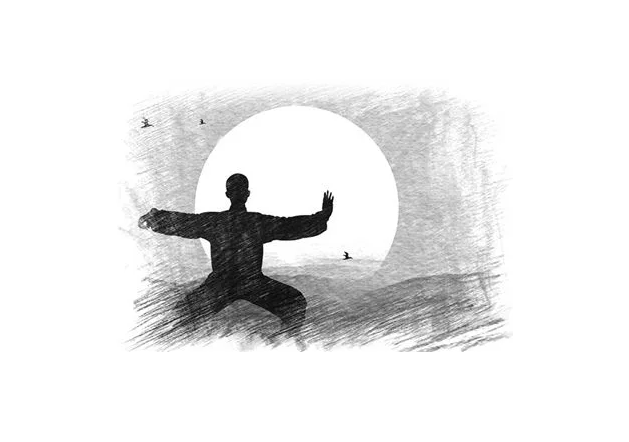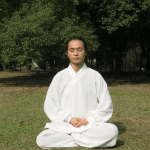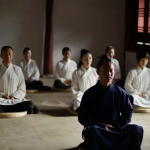Start Learning Tai Chi
When I lie down, perhaps it’s the time in my life when I have the most free time. I learned Tai Chi twenty years ago and practiced for many years, but I’ve never seen any real skill develop, nor did I notice any significant improvement in my health. Could it be that Tai Chi is truly useless? Maybe I should spend some time seriously studying it!
So, for the past two years, that’s exactly what I’ve been doing.
I haven’t systematized my research process yet, but I plan to write more about it in the future. In the past two years, I’ve spent a lot of time, money, and effort on this. I’ve traveled to Beijing, Shanghai, Shiyan in Hubei, and Guangfu in Handan, Hebei, and of course, Chenjiagou in Henan. In places where I didn’t encounter any masters, I just took a quick look around. In places where I thought there would be masters, it also turned out to be just a superficial visit. I did meet some masters, but not in the places I expected.
True Tai Chi masters are simple and unpretentious. There are also some highly reputed masters, but I won’t comment on them here.
It’s said that over 100 million people worldwide practice Tai Chi, but how many have truly developed Tai Chi skills? And how many have genuinely benefited from it? For instance, how many have nourished and rehabilitated their bodies, or acquired some self-defense skills?
I’ve practiced for many, many years. Apart from winning a medal in a competition during university, which gave me some vanity, I’m quite aware of how much I have truly benefited.
I’m very glad that I wasn’t a professional athlete back then. I had many other things to do—studying, working, earning money—so Tai Chi was just a hobby for me. If I had been a professional athlete, dedicating my best years to such practice only to end up with a few certificates and still far from the true essence of Tai Chi, I can’t imagine how tragic that would be.

Understanding of Tai Chi
It’s often said that it takes ten years of practicing Tai Chi before one can step out and show their skills, but in reality, how many people have practiced Tai Chi for ten years only to achieve nothing? Is Tai Chi really meant to be like this?
Two years is certainly not enough to develop Tai Chi skills, but the gains I’ve made in these two years are significant. At least I’ve touched the threshold and suddenly feel enlightened!
What does real Tai Chi practice involve? What’s the difference between flashy routines and skill-developing routines? How difficult is it to truly learn Tai Chi?
I’m not a Tai Chi instructor and have no teaching experience, but I am a Tai Chi learner. If there are indeed 100 million people practicing Tai Chi, my passion for learning Tai Chi definitely surpasses 99% of them. Based on my twenty years of learning Tai Chi the hard way, here’s a summary of answers to these three questions:
What is real Tai Chi practice?
It absolutely cannot be about strength, speed, or the aesthetics of movements. Most people practice routines daily, obsessing over whether the form is standard or looks good. Some squat lower to build leg strength, some train their muscles for striking power—this is all wishful thinking. Apart from the fact that you can practice these while you’re young, you definitely won’t be able to do so when you’re older.
These abilities are not long-lasting and are not what Tai Chi aims for. So, what does Tai Chi practice involve? My summary is one word: “harmony” .
In modern terms, “harmony” refers to the adaptation and fitting together of two things.
So, what is Tai Chi practice harmonizing?
Practicing routines is about harmonizing your movements with your body. Everyone’s body is unique, with different skeletal structures and muscle forms. The performed movements and forms cannot have a completely identical standard. The so-called standard of Tai Chi routines should be the match between the movements and your own body structure, such that the movements, when perfectly matched with your body, can produce complete and appropriate force.
This is what the Tai Chi classics refer to as “internal harmony” and “external harmony,” which is the goal pursued in practicing routines.
Practicing push hands
Practicing push hands is about harmonizing with your opponent. Push hands can be practiced cooperatively, where both partners agree on movements and forces to experience and feed each other’s strength—this is harmony. Alternatively, it can be practiced without agreed movements and forces, allowing one to feel and understand the opponent’s strength—this is also practicing harmony with the opponent.
When it comes to actual combat, it’s about harmonizing with the enemy. Only by achieving harmony with the opponent can one effortlessly defeat them. This is the charm of Tai Chi, defeating the strong with the weak. However, this is indeed very difficult to achieve.
Practicing Tai Chi is about harmonizing with oneself and with the opponent.
In life, it’s about harmonizing with family and friends, and with the environment. In life, it’s about harmonizing with the universal Tao. This is what it means to enter the Tao through martial arts.

What’s the difference between “Flower Routine” and “Skill-Developing Routine”?
The biggest difference lies in their purpose. “Flower Routine” is designed to look good, often seen in performances or competitions, and sometimes in parks where enthusiasts demonstrate various abilities, hoping to achieve health benefits or combat skills without understanding the underlying principles.
On the other hand, “Skill-Developing Routine” emphasizes the integration of opening and closing, yin and yang balance… Perhaps these terms are too abstract; in simpler terms, it focuses on comfort and balance, practical combat application, and spiritual intent—essentially what was previously referred to as “harmony.”
True Tai Chi places particular emphasis on the alignment of the spine and the flexibility of joints during practice, constantly maintaining balance through the feet and exploring energy pathways throughout the body.
“Flower Routine,” even if described eloquently with Tai Chi principles, may not necessarily be replicable, as knowing in theory does not equate to bodily mastery. Conversely, in “Skill-Developing Routine,” a master may not immediately teach concepts like “emptying the crown, sinking the shoulders and elbows, loosening the waist and sinking the hips, and sinking the qi to the dantian.”
These are principles that one practices and learns over time under a master’s guidance, rather than techniques one can execute from the outset.
Of course, the difference between “Flower Routine” and “Skill-Developing Routine” isn’t about different schools or even between competitive and traditional routines; it’s about whether they embody the principles of Tai Chi.
When routines are practiced in accordance with these principles, they express the essence of Tai Chi. Even the simplified 24-form Tai Chi can demonstrate profound skill when practiced in this manner.
It’s worth noting that nearly all Tai Chi competition routines showcase “Flower Routines.” Athletes work tirelessly to promote Tai Chi, investing their youth to perform the most visually appealing movements.
Some argue that it’s just for health and not worth being overly critical about, perhaps reflecting differing views on what constitutes health maintenance. For some, it may be a casual pursuit, but true health cultivation nourishes the body, enhances immunity, and even prevents disease.
If Tai Chi practice lacks these fundamental goals, then indeed, such distinctions may not matter.
How difficult is it to learn true Tai Chi?
In reality, the routines performed by athletes are the most challenging—they require low stances, high jumps, and stable landings, demanding high levels of skill!
True Tai Chi, on the other hand, doesn’t involve so many high-difficulty movements.
Authentic Tai Chi is actually quite easy to learn because the principles have already been summarized by past masters, and there are many traditional manuals available. The key is understanding these principles, which requires oral transmission and hands-on teaching from experienced teachers. Once you understand, the only thing left to do is practice!
True Tai Chi isn’t difficult to learn; the challenge lies in the practice!
While it’s true that perhaps a billion people globally practice Tai Chi, how many of them practice regularly and with discipline every day? How many talk about wanting to learn Tai Chi but always add, “When I have time,” “When I retire,” “When I’m old,” or “It’s too early for health preservation, maybe in a few more years”?
If you genuinely want to learn Tai Chi, this is where the real difficulty lies.


